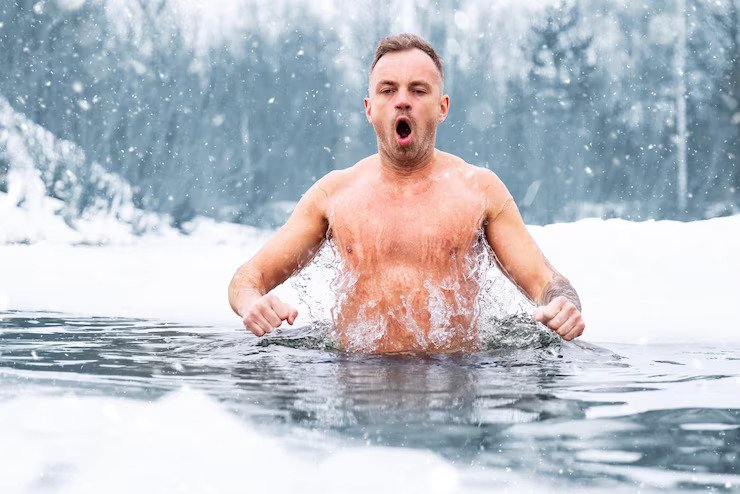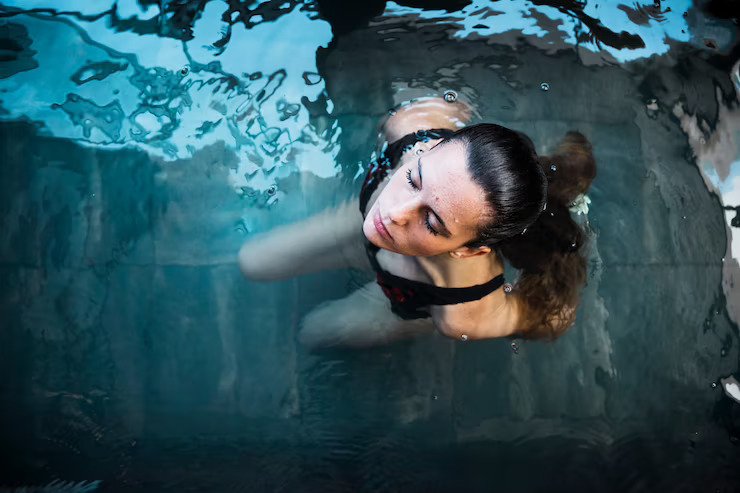How To Acclimatise To Cold Water
Lately, there has been a surge in open-water swimmers, which is fantastic. Nonetheless, it is vital to understand how to adapt your body to cold temperatures and cold waters.
Failing to do so can endanger yourself in icy and potentially dangerous waters. This post will teach you how to prepare and safely immerse yourself in cold water.
Following our expert advice on cold water swimming, you can indulge in this exhilarating experience without compromising your safety.
Therefore, learning how to swim securely and acclimate yourself before your initial plunge is essential!
Contents
What is acclimatisation?
Acclimatisation is how your body adjusts to unfamiliar and often challenging conditions while maintaining peak physical fitness.
Acclimatising your body is crucial to withstand extreme conditions like cold water to avoid any unfavorable reactions caused by temperature changes.
While your body will naturally attempt to adapt to new surroundings, there are measures you can take to expedite this process.
Keep reading to find out how to acclimatize to cold water safely.
How does your body react to cold water?
Immersing your body in cold water can trigger a physical response known as cold shock. Cold-water submersion can cause your blood pressure and heart rate to elevate, leading to shivering, breathlessness, or involuntary gasping.
Cold receptors near the surface of your skin detect the sudden temperature change and stimulate this reaction.
However, you can learn to regulate your cold shock, and there are techniques to minimize the impact of cold temperatures.
Continue reading to discover the most effective approach to acclimatising to colder water.
How to acclimatise to cold water

If you are serious about starting cold-water swimming, then you need to consider the following steps:
1. Practice at home
You can begin by practicing at home with cold showers to acclimate yourself to cold water.
Start by turning the shower to a cold setting for thirty seconds at the end of your regular shower. As your cold shower becomes less daunting, you can gradually increase the time spent in the cold water.
Once you have developed a higher tolerance, you can attempt to take a cold bath and may even want to add ice to it.
Once you have built up your endurance at home, you may feel prepared to try swimming in the UK’s cold waters.
2. Consider a neoprene wetsuit
Neoprene wetsuits are an effective tool to assist in acclimatising to cold water. They offer insulation, which maintains your body temperature, keeping you warm in chilly waters.
Other neoprene gear, such as hoods, socks, gloves, and booties, are also useful in reducing your cold shock response by providing extra insulation to your body.
Neoprene material captures a thin layer of water close to your skin, which retains heat and helps regulate your core temperature.
Fortunately, affordable neoprene gloves, suits, and booties are available on the market, so if you are worried about losing body heat, we suggest considering these options!
3. Get comfortable with discomfort
When you first dip into cold waters, particularly during autumn or winter, your body’s reaction may catch you off guard. It’s crucial to stay composed and understand that this is a natural sensation.
Reacting and panicking about your discomfort is the worst thing you can do.
You’ve got to get comfortable with being uncomfortable.
Redbull says,
Therefore, take it slowly, acknowledge and embrace your body’s response, and avoid pushing yourself too far.
There’s no need to immerse yourself completely or dive on your initial attempt. Before attempting more challenging feats, wait until you recognize and comprehend your body’s reaction.
4. Control your breathing
Entering cold water can cause shortness of breath and panic, which can be hazardous when swimming.
The crucial strategy to deal with this breathing issue is to take things slowly. Once in the water, spend a few minutes floating around to assess how your body reacts before attempting to swim.
Take long, deep, and steady breaths to soothe yourself. Once you feel your breathing has steadied, consider increasing the intensity of your cold water swim.
Your cold shock response will occur almost instantly, and if it’s too overwhelming or you start feeling unwell, you must exit the water and dry off.
5. Understand your body’s reactions
To stay calm when experiencing a cold shock response, an effective method is to learn about your body’s physiological reactions.
You may feel like you’re becoming hypothermic, but you’re undergoing vasoconstriction of the capillaries.
When you comprehend what’s happening inside your body, you’ll realize that your response is merely your body adapting to the new environment.
6. Warm-up immediately
After your cold swim, drying off and changing into warm clothes is crucial to prevent your body from further cooling down.
A dry robe is popular among cold water swimmers as it helps dry off and keeps you warm while changing. Additionally, keep extra warm clothes in your tow or car to ensure you have enough in case any become damp.
Before a hot shower, ensure your body has warmed up slowly and is no longer cold. Acclimating to cold and hot water is important, so take your time and don’t rush the process.
7. Rehydrate
Swimming in cold water causes blood to flow toward your core, filtering fluid out of your blood. As a result, you may feel the urge to urinate while swimming in cold water.
Rehydrating after swimming in cold water is essential as you lose fluids during the activity. Tow floats with pockets for water bottles are available, allowing you to hydrate while still in the water.
Drinking the water you’re swimming in is not recommended as it may be unsafe for consumption. Saltwater, in particular, can be dehydrated due to its high salt content.
8. Practice makes perfect
Your initial experience with cold water swimming can be challenging as you are not accustomed to such low temperatures. Consistent practice is key, so try to swim weekly.
It’s unnecessary to have long or strenuous swims; gradually exposing your body to colder temperatures every week will aid in acclimation.
There are numerous health advantages to cold water swimming, and making it a regular activity can lessen anxiety and apprehension associated with dipping into frigid waters.
FAQs
Can swimming in cold water give you a headache?
Swimming in cold water can constrict your blood vessels, which may cause a headache similar to brain freeze.
Don’t worry; this is a common physiological reaction, not a cause for alarm. If you experience a headache while in the water, remove your goggles, exit the water, and dry off to warm up.
You can take over-the-counter pain medication like paracetamol and rest for the remainder of the day until you feel better.
Why do I feel tired after cold water swimming?
Swimming in cold water requires your body to work harder to maintain its internal temperature, which can lead to fatigue. Therefore, it’s common to feel more tired when swimming in colder water than in warmer water.
To avoid overexertion, take it easy and don’t push yourself too hard. It’s important to remember that you may not be able to swim as far as you would in a pool.
Start with shorter swims and gradually increase the duration as you acclimate to the cold.
Why do I feel sick after cold water swimming?
When you leave cold water, your blood vessels dilate as they adjust to the new temperature. This process can result in orthostatic hypotension, dizziness, and nausea.
If your wetsuit is too tight, you may experience similar symptoms, so make sure it fits well and is in good condition.
If you feel nauseous, it could also be due to panic and hyperventilation, so try to stay calm and regulate your breathing before entering the water.
What are the signs of hypothermia?
The primary indicators of hypothermia are:
- Shivering
- Fatigue
- Disorientation
- Trembling hands
- Memory loss
- Slurred speech
- Sleepiness
If you encounter any of these symptoms, getting out of the water and warming up is essential. To avoid hypothermia, limit your time in the water to less than ten minutes unless your body has fully adjusted to the temperature.
Summary
Acclimatization is crucial for cold water activities, whether summiting Everest or dipping in icy waters. Jumping into frigid waters without preparation can be risky and even fatal. To swim safely in winter, it’s vital to adapt to the cold through hypothermic conditioning.
Our guidelines will help you securely prepare for cold water swimming and familiarise yourself with how your body reacts to low temperatures.
If you have any medical conditions like heart problems, seek your doctor’s advice before swimming in cold water. Certain health issues can make acclimatisation more challenging, so always prioritize safety.
Read Also:
- 8 Tips for Staying Warm on Your Shift
- How Important Is A Water Safety Plan?
- Follow These 5 Steps To Grow Your Gym And Fitness Business



